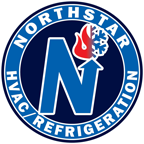Planning for 2030: Preparing for the Future of HVAC and Refrigeration
Written by Ed Rice
The HVACR industry is at a pivotal moment. As we approach 2030, shifting priorities around sustainability, energy efficiency, and carbon reduction are reshaping how businesses design, operate, and upgrade their heating, ventilation, air conditioning, and refrigeration systems. Whether you're managing a commercial facility, industrial plant, or mixed-use property, the next several years will demand strategic investments and proactive planning.
At Northstar Refrigeration, we’re already helping our clients prepare for this transformation. In this blog post, we’ll break down what’s ahead—and what you can do now to stay ahead of the curve.
Why 2030 Matters
2030 is more than just a number on the calendar—it’s a major milestone for emissions and efficiency targets across the globe. Government policies, building codes, and environmental regulations are aligning around this date to push for:
Net Zero Carbon goals for new and existing buildings
Phase-outs of high-GWP (global warming potential) refrigerants
Tighter energy use restrictions and performance benchmarks
Electrification of HVAC and heating systems
Broader adoption of building automation and intelligent controls
Boston's BERDO (Building Emissions Reduction and Disclosure Ordinance), New York’s Local Law 97, and the federal Inflation Reduction Act are just a few examples of aggressive frameworks accelerating this transition. If your facility relies on outdated systems, planning now will help you avoid costly disruptions—or worse, non-compliance penalties—down the road.
Key Industry Shifts to Watch
Refrigerant Transitions
By 2030, older refrigerants like R-410A will be largely phased out in favor of low-GWP options, including A2L refrigerants, CO₂ (R-744), and ammonia (NH₃). These new refrigerants come with unique safety, design, and service requirements.
Be prepared: New systems and retrofits must be compatible with evolving codes and technician certifications. Northstar is already working with clients to assess risks and plan for a smooth transition.
2. Electrification & Decarbonization
With fuel bans and clean energy standards on the rise, more buildings are turning to electric-based systems, including heat pumps, VRF technology, and heat recovery solutions.
These technologies reduce carbon emissions and align with rebate and incentive programs. However, integrating them with legacy systems can be complex—making early planning essential.
3. Data-Driven Performance
By 2030, HVACR systems will be smarter than ever. Building Automation Systems (BAS), IoT-connected sensors, and real-time analytics will drive optimization and fault detection.
Facilities that embrace data-driven decision-making will be able to maximize uptime, reduce costs, and prove compliance with reporting mandates like Energy Star Portfolio Manager or BERDO emissions disclosures.
4. Resiliency and Redundancy
With climate risks, heat waves, and extreme weather events on the rise, HVAC and refrigeration systems must be resilient. Redundant system design, spare parts inventory, and critical cooling response plans are becoming standard best practices.
5. Sustainability as a Competitive Advantage
Stakeholders—including customers, investors, and tenants—are demanding greener buildings. In many sectors, sustainability credentials like LEED certification or GRESB scores directly impact leasing and brand value.
Modern HVAC and refrigeration systems play a key role in hitting these benchmarks.
How to Start Preparing Now
Future-proofing your facility doesn’t happen overnight. But starting early can help you avoid emergency replacements, unbudgeted costs, or compliance headaches.
Here’s how Northstar can help you get ahead:
Energy Benchmarking: Know where you stand today.
Facility Assessments: Identify your systems that need upgrades or retrofits.
Decarbonization Roadmapping: Plan capital investments around Net Zero goals.
Refrigerant Transition Plans: Avoid supply shortages or service delays.
Controls & BAS Integration: Upgrade to smarter, more efficient systems.
Rebate & Incentive Navigation: Maximize available funding for your projects.
Final Thoughts: Make 2030 Your Competitive Edge
The future of HVACR is low-carbon, high-efficiency, and digitally connected. Planning for 2030 isn’t just about compliance—it’s about positioning your facility for long-term success.
At Northstar Refrigeration, we’re your partner in future-ready solutions. Whether you need a retrofit strategy, a refrigerant transition plan, or a full system upgrade, our team is here to help you build a smarter, greener operation.
Call us today at (508) 888-3692 to schedule your future-forward facility consultation.
(508) 888-3692
www.northstarhvacr.com



